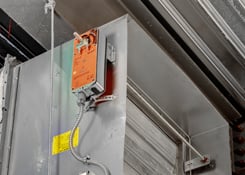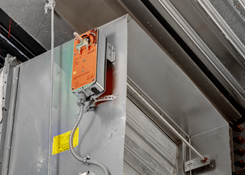White Paper on Actuated Dampers in Smoke Control Systems
Belimo's white paper on Actuated Dampers in Smoke Control Systems covering smoke control strategy and tactics which defines the code requirements for fire and smoke dampers and their operation in case of fire.
The International Building Code (IBC. 2009) is the model code for most building codes in the United States. The mechanical and fire regulations define requirements for fire and smoke dampers and their operation in case of fire. The various codes have exceptions and specific instances in which one or more smoke control methods discussed here may or may not be required. The purpose here is to explain how dampers operate in those systems so that the firefighter, fire prevention officer, code official, consulting engineer, or building owner can better understand the technology.
The specific code requirements are not the subject, but it is sometimes necessary to keep them in mind. Chapter 3 of the IBC gives use and occupancy classifications; that is, the different activities and uses that define, for example, a mercantile occupancy or high-rise business occupancy. Chapter 4 gives special detailed requirements based on the classifications. Chapter 7 provides the criteria for construction, including fire and smoke dampers in barriers and walls, and Chapter 9 covers the requirements for sprinklers, alarms, and smoke control systems. Chapter 10 is Egress Solutions, and Chapter 30 covers elevators. These chapters cover most of the code provisions for fire and smoke dampers. Most code provisions are based on experience in building construction or lessons learned from past fires or disasters. Some cities have damper requirements in the Mechanical and/or Fire codes also. For example, the New York City Codes have provisions in all three codes (NYC 2008). The NYC Mechanical Code, Section 405, covers some of the requirements for high-rise business building manual or automatic control of some dampers. Section 513 covers some needs for smoke exhaust systems, and Sections 606 and 607 cover smoke detector and some remote control requirements. The NYC Fire Code section 704.1 covers floor openings and shafts. Many other cities and states have codes with modified provisions based on the model codes. Many states have strong smoke control provisions as seismic activity can tear gas lines from the ground, causing fire hazards and simultaneously breaking water lines, thus disrupting sprinkler action. To learn more, download our white paper now.

